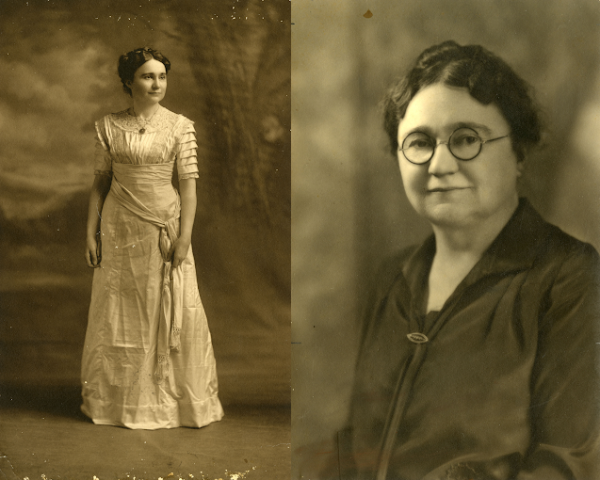Guilford College Study abroad course offered in India
In the fall semester of 2019, a three-week study abroad course will be offered to students that will look at health, culture and sustainability in India. This course will focus on engaging in community outreach, gaining knowledge of non-profit management and promoting public health. Students participating in this course will travel to India for approximately 12 days to work with the Comprehensive Rural Health Project, also known as Jamkhed. The course will be led by Professor of Sports Studies Lavon Williams and Professor of Business Management Michael Dutch.
“I think that going abroad to learn new things is a great opportunity, especially for us as students, to gain a wider perspective and to be forced to think about things that they haven’t given any thought to before,” said junior psychology major Amie Hall.
To provide interested students with an overview of the course, as well as recent updates about what students can expect, Williams and Dutch held a follow-up meeting about the course on Wednesday, Feb. 20, at 5:30 p.m. in the Orangerie.
“It’s really community development, outreach and partnership,” Williams said.
Jamkhed works to empower the various rural communities that they work with by teaching prominent members of those communities about how to care for the health of those around them.
“The approach of getting folks, instead of sending people, to take care of their health, is important,” Dutch said. “They will go out into communities and get the communities to appoint a person who is going to be in charge of the health of the community.
“Then they bring that person in and train them, so that it is now something that the person is able to do. So that is really empowering the community to empower itself and that’s why it sticks. It’s not some outsiders coming in and saying that they will be back in two or three weeks or months. It is getting the community to a point where they can take care of themselves.”
During their time in India, students will be learning from the people around them rather than trying to teach the people they meet.
“We will be going to the villages and learning from the people who live there,” Dutch said. “The people there have a new perspective and it is a good learning experience for us, as people from the United States. We are not going to teach those people, we are going to learn from them and to use their perspectives and their culture to better understand our own.”
During the study abroad course, students will learn about the business aspect of non-profit organizations in addition to the public health systems and culture in India.
“As a business professor, I am offering the business version of the class, which is really the same class,” Dutch said. “I want to look more at how the systems allow for them to address public health in India. I’m using the public health aspect of Jamkhed from an organizational standpoint.”
Dutch went on to explain that although India is not usually considered as a large force in the global economy, the country is quickly becoming more prominent.
“India is the third largest economy in the world, yet people generally don’t think of India as an economic powerhouse even though it is, and it is only going to grow to have more prominence in the world,” Dutch said. “I think that it is important for any business person, such as myself, to realize that there is this very large country with a humongous population that is making a rather quick transition from an underdeveloped to a developed nation.
“That’s another thing that I think makes India very interesting, is that you see both of those spheres existing at the same time and sometimes even right next to each other. They are very contradicting, but I think that it is a learning experience.”
Both Dutch and Williams have taken trips to India in the past and were able to speak to students attending the information session about their travel experiences.
“I have been to India on five different trips, I will be going this summer again, then I will go back to India this fall for the study abroad course and I will most likely be going again in the spring semester with more students,” Dutch said. “I haven’t had a bad trip yet and I am pretty sure that I won’t.
“I am really excited about going back to India with students, and I am excited to go to a more rural area. It would be interesting to go to Delhi or Mumbai and see the big city, but my impression is that you will learn more when you get out of the big city and instead go to the places where people live.”
According to Williams, one significant cultural difference between India and the United States is how the populations regard time.
“Time has a different meaning in India than it does here,” Williams said. “Punctuality is very valued in the United States, but it has a different value and connotation in India. It is kind of comforting and relaxing to know that we can function and be productive while having that different relationship with time.”
Another difference that Williams and Dutch spoke about to help prepare students for what they will experience during their time in India is the religious tolerance that the population has there.
“India is primarily Hindu, but it is also the second largest Muslim country in the world,” Dutch said. “Typically, the Hindus and Muslims exist in harmony together, because life is hard in the villages. It is hard enough on its own without adding the difficulty that comes from hating each other, so instead they work with each other. India is the birthplace of Buddhism, so there is that influence as well. Also, if you go more along the coastal areas, there is a significant Christian influence as well. So, you have all of these religions existing together and in harmony with each other.”
In addition to the religious tolerance in India, Dutch also spoke about the different systematic differences between India and the United States.
“There are bicycles and cars and other things in the road that looks like chaos,” Dutch said. “But in the midst of this chaos there is a system and a vibrancy and life which I don’t typically see in the United States. The United States typically has so much order that, at times, it is not as vibrant.”
Due to the vast cultural difference between India and the United States, students will have the opportunity to reflect on what they are experiencing while they are in India and how it has changed their perspective on various topics.
“One thing about going to India, at least for me, is that it is an opportunity for me to reflect about what I think about things like the idea of chaos and order,” Williams said. “We have a different relationship with processes and the way things are done. We tend to be very systematic where in India people are more comfortable with what we would consider to be chaos. There’s something nice in being in what feels like chaos and learning to be comfortable with it.”
The Study Abroad course is estimated to cost students an additional $1000 on top of typical tuition costs, although Williams and Dutch are hoping to make the course more financially accessible to students.
“We want you to be as comfortable as possible, but also to have a trip that comes under the budget and not be a tremendous financial burden for students,” said Williams.
Williams and Dutch are also planning to have their students complete all academic work before returning to the United States so that the students will have a few days to recover from any jet lag that they experience.
“We are planning to have three or four major activities planned per day once we are on the ground in India,” said Dutch. “It can be a class that one of us would teach or it can be a class taught by the people at Jamkhed. We will probably go out to a village at least once a day to talk to the people there and learn from them.
“We will also set aside time for students, probably not alone, but with others, to walk around and explore the area that we are in. The original concept was to spend 10 days in India and do work here at Guilford when we got back. Then we decided to instead stay a little bit longer in India and then finish all of the work there before we fly back to the United States. We thought that it would be a lot better than trying to recover from jet lag and stress about finishing a lot of homework right before the 12-week semester begins.”
To wrap up the discussion, Williams and Dutch spoke to students about the requirements for international travel, including possessing a passport that will be valid for at least six months after the return to the United States.
“If you don’t have a passport, you will need to get one,” said Dutch. “And if you do have a passport, then you need to make sure it is still valid for six months after the day that we return. As you progress through the process, we will walk you through several different avenues for also obtaining a visa. India is one of the countries that takes immigration very seriously.
“You want to make sure that you do everything right so that it’s not like you get there and they don’t let you in, or worse if they don’t let you out. The passport and visa costs are not considered program costs, but for the process we will be there to help you. We will also work with you to remind you of these things with enough time for you to get them instead of running out of time and then we can’t let you on the plane.”
Following the conclusion of spring break, Williams and Dutch will be holding an orientation about this Study Abroad course. This session will have more concrete financial information and will allow students to go more in-depth about what to expect from the trip.
“After spring break we will have an orientation. That is when we can talk more specifically about the details of the trip and give you all a closer estimate of the cost.”








